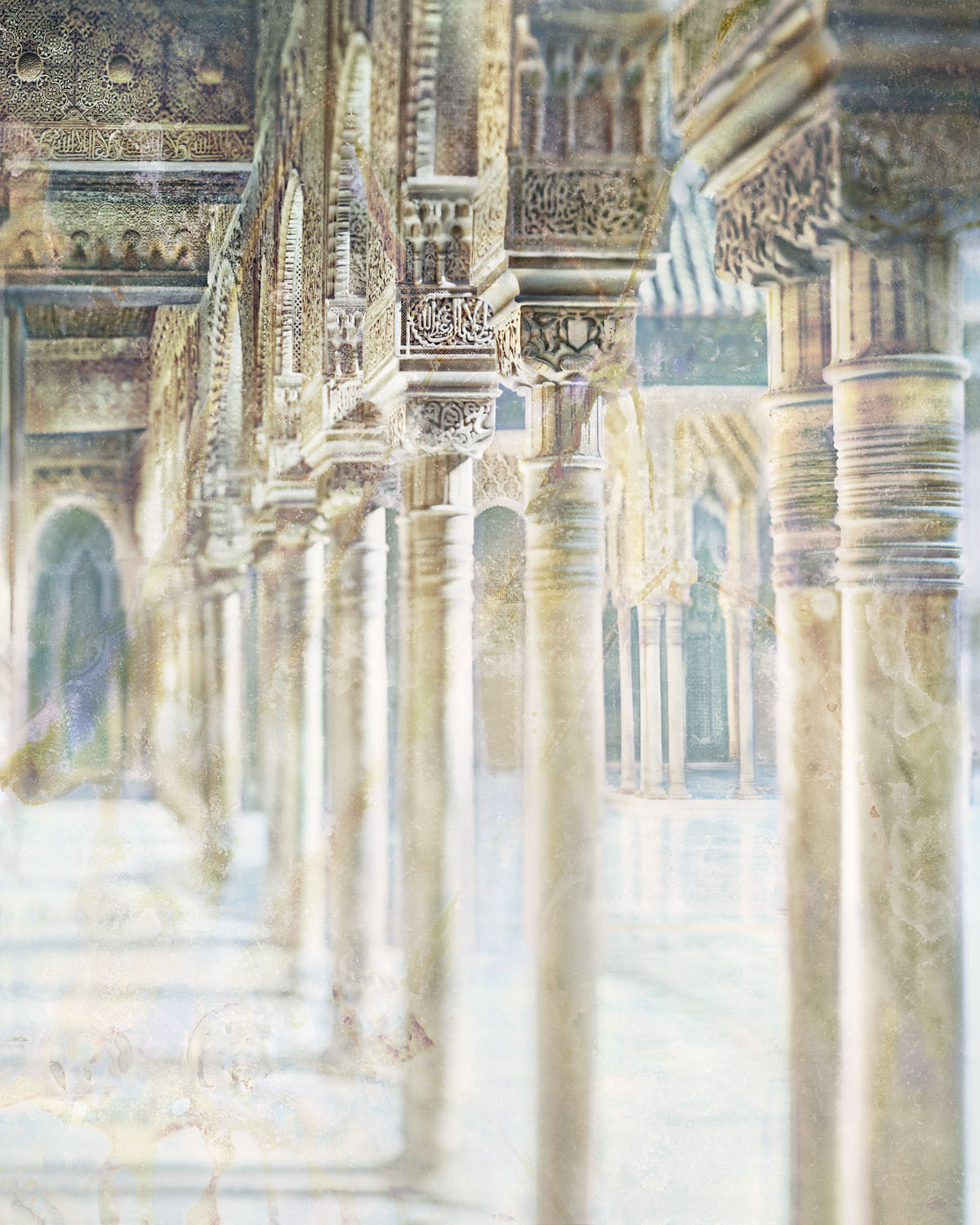 BACK
BACK
The hall of the kings
Five bedchambers round a large room, scenery of receptions and festive representations, their painted domes are the most characteristic element.
 Make your selection to discover more places
Make your selection to discover more places
The celebrations held in the hall could be observed from the five alcoves that flank the hall, except at the western side of the hall, with access to the courtyard through three wide openings framed by three stalactite arches, following a structural pattern similar to that found in the Hall of Comares. The five alcoves are separated from each other by four small niche-like chambers.
The Hall of the Kings is divided into three square-shaped spaces with the porticos and the alcoves in the centre, covered with stalactite cupolas that rise up from the general roof in the form of “lanterns” –another typical feature of the Nasrid architecture. These spaces are perpendicularly segmented by large double stalactite arches.
Both the plasterwork decoration and the tiles, especially on the lower parts of the walls, have been frequently restored. The distribution of the spaces and the combination of light and shadows that illuminate the space, together with the extraordinary composition of the opening to the Court, make the Hall of the Kings one of the most intriguing Alhambra palace areas.
The paintings on the east side vaults of the Hall of the Kings represent sequentially the scenes of a medieval story in which some knights, clearly distinguishable by their Muslim and Christian robes, perform different tasks perhaps to obtain the favour of a lady in a feudal scenario.
The story may be said to start in the northern alcove, be independent or continue and end in the room. Here the scenes represent a chess game being played in a castle, after which the Christian knights, one on foot and the other on a horse, trounce a lion and a bear; on the other side of the castle a Muslim rider spikes a large wild boar.
From the main tower of a large castle in the upper background, a troubled lady watches a medieval joust taking place, in which the victor is obviously the Muslim nobleman whose spear unseats the Christian knight; on the left of the castle a mythological scene is depicted of the rescue of a lady from the grips of a savage beast.
All the scenes take place in the middle of an extraordinary and exuberant natural environment, with birds and wild animals moving in an environment that is densely covered with plants and trees.
The Hall of the Kings Vaulting
The Hall of the Kings was named after the ten enigmatic individuals whose figures are illustrated on the dome above the main bedchamber. For many years the figures were incorrectly thought to depict leading members of the Nasrid dynasty; till the 19th century the chamber was known as the Hall of Justice owing to the fact that the figures were thought to be courtroom judges.
Nevertheless, it is generally understood that the scene is a realistic depiction of an activity that commonly took place there: a meeting of dignitaries in the presence of the Sultan or leading members of the Court.
The figures, whose features depict venerable westerners, are seen seated in traditional fashion and gesturing while having a lively conversation. They are ceremoniously dressed, bearing swords and wearing belts and Nasrid style turbans.

La Alhambra, a look from Fernando Manso
MORE INFORMATION
WASHINGTON IRVING AND THE ALHAMBRA
MORE INFORMATION
THE GATE OF BIBARRAMBLA. Historical report of the monument and its rediscovery
MORE INFORMATIONTHE EMPEROR´S CHAMBERS
MORE INFORMATION
The Council of Alhambra and Generalife will refund automatically the full amount of the bookings
MORE INFORMATION





 Contact
Contact


















